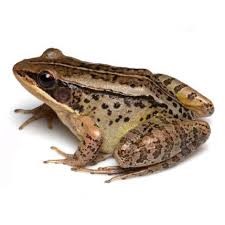
Nidirana noadihing

24.11.2023
Nidirana noadihing , Daily Current Affairs , RACE IAS : Best IAS Coaching in Lucknow
|
For Prelims: About the Nidirana noadihing , Appearance ,Arunachal Pradesh - Geography ( climate, flora fauna) |
Why in the news?
Recently, scientists have discovered a new species of frog in Arunachal, named Nidirana noadihing.
About the New Frog Species:
- It is a new species of 'music frog' which is named Nidirana noadihing.
- The new frog of the genus Nidirana is phenotypically distinct from its congeners by a combination of morphological characters
- It is confirmed for the first time that the Nidirana genus has been found in India.
- The Nidirana species is known in Japan, Taiwan, China, Vietnam, Laos, and Thailand.
- Nidirana are known to inhabit swamps, ponds, and paddy fields, and they often construct nests to lay their eggs.
- The new species was named after the Noa-Dihing River, which is near where the specimens were discovered and collected.
- Appearance: The amphibians have "irregularly shaped and sized spots" on their eyelids and they have dark stripes around their moderately large eyes. Their pupils are gold-rimmed. Their irises are dark brown and have a golden spackle.
- The frog has a "robust" body, with males measuring between approximately 1.8 inches and 2.3 inches long and females measuring between about 2.4 inches and 2.6 inches long.
- The frogs have a 'rounded' snout and 'smooth' skin with bony protrusions on their backs.
- The amphibians have a 'pale cream' line bordered with dark brown running down the centre of their bodies. Their light brown limbs are adorned with dark stripes.
- The frogs' throat, forelimbs, thighs and lower legs are light brown and pinkish.
- Their groin and the outside of their thighs are pale yellow with irregular dark olive patches, and their cream-coloured chest and belly have a golden tinge.
Arunachal Pradesh - Geography
- It is the largest state in the northeast in terms of area (32,000 square miles) and it borders China, Burma and Bhutan as well as the Indian states of Assam and Nagaland.
- With a little over one million inhabitants, the density of population (31 per square mile) is the lowest among all Indian states.
- More than 80 percent of Arunachal's land area is covered with forest and parts of the state remain unexplored. It has limited transport and communication infrastructure. With few highways, helicopter services or footpaths are the main transportation lifelines.
- Arunachal Pradesh is 96 per cent hill terrain and, it is the hills which have acted as the natural boundaries for the different communities that inhabit Arunachal.
- Much of the land is forested and the landscape and forests vary from the western end of the State to the east and with changing altitude.
- There are alpine forests, temperate and subtropical forests, and semi-evergreen forests.
- The temperate forests are mainly conifer, larch, juniper and spruce. Temperate bamboos form shrubby undergrowth in many places and the broad- leaved forests include magnolia, oak, rhododendron, chestnut, sal, teak, and poplar. There are wetlands, where the rivers meet the Brahmaputra, and grasslands in the mountains as well as riverine grasslands.
- The big attraction is the state's dazzling array of flora and fauna, in a habitat that combines glacial terrain, alpine meadows and sub-tropical rainforests.
Namdapha National Park, in the northeast, is home to the rare Hoolock gibbon; other animals include the legendary snow leopard, tigers, musk deer, bears, panda and elephant, while Arunachal also abounds in bamboo and cherishes over 500 species of orchids.